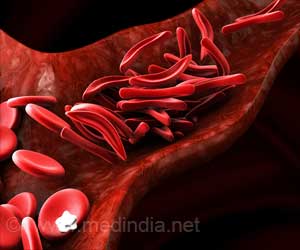If the oxygen levels are increased, it will reverse the blockage. This mimics what’s done when there’s a splenic sequestration crisis. The first thing doctors do is transfusion, and in most cases, that gives some relief to the patient. The findings are described in the journal Proceedings of the
.
Most red blood cells have a lifespan of about 120 days, so nearly 1 percent of the supply has to be removed every day. Within the spleen, blood flows through tissue known as the red pulp, which contains narrow passages called inter endothelial slits.
Advertisement
Any red blood cells that can’t pass through these tiny openings, because they’re damaged, stiffened, or misshapen, become trapped and are destroyed by immune cells called macrophages.
To model the spleen’s filtration function, the researchers created a microfluidic device with two modules the S chip, which mimics the inter-endothelial slits, and the M chip, which mimics the macrophages. The device also includes a gas channel that can be used to control the oxygen concentration of each chip to simulate conditions in the body.
Microfluidics in Sickle Cell Disease: Perspective Beyond the Flow Problem
Using this device, they sought to better understand acute splenic sequestration, which occurs in about 5 percent of patients with sickle cell disease, usually in children. When this happens, the spleen becomes enlarged, and the patient becomes severely anemic.
Doctors usually treat it with blood transfusions, but if that doesn’t help, the spleen may need to be surgically removed. Working with healthy red blood cells and sickled red cells from sickle cell disease patients, the researchers allowed the cells to flow through their device under controlled oxygen levels.
Under normal oxygen conditions (20 percent oxygen) sickled cells created some blockage at the slits, but there was still space for other blood cells to pass through. However, when the oxygen level decreased to 2 percent, the slits quickly became fully blocked.
When the researchers increased the oxygen level again, the blockage cleared up. This may partly explain why blood transfusions, which bring oxygenated blood cells into the spleen, can help patients who are experiencing acute splenic sequestration.
These findings provide a general scientific framework to guide and rationalize what doctors observe. They also help to elucidate how the spleen provides a critical function to help filter blood cells.
They also found that mildly deoxygenated conditions (5 percent oxygen) cause some clogging but not enough to produce a splenic sequestration crisis, which may explain why such crises occur rarely.
Later, they used the other device module, the M chip, to model what happens as red blood cells encounter macrophages under different conditions.
They found that when oxygen levels were low, sickled red blood cells were much more likely to be trapped by macrophages and ingested by them. The stiff sickled cells retained their sickled shape even after being ingested, which made it harder for macrophages to break them down.
When oxygen levels were increased, the blood cells regained their normal shape, even the cells that had been ingested. This allowed macrophages to more easily digest them and clear up the clogged filters.
Researchers are now using the spleen-on-a-chip to study how drugs are used to treat sickle cell disease. They also hope that the device could one day be used to help doctors analyze individual patients’ blood cells and monitor how their disease is progressing.
This approach may give doctors some idea of how well the patient is doing and in what situation they need to remove the spleen or take other measures.
Source: Eurekalert



